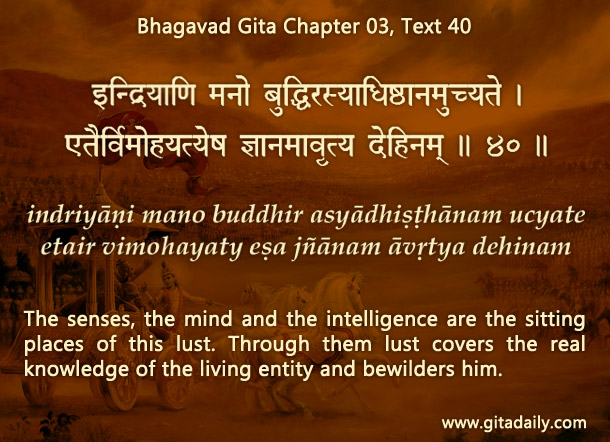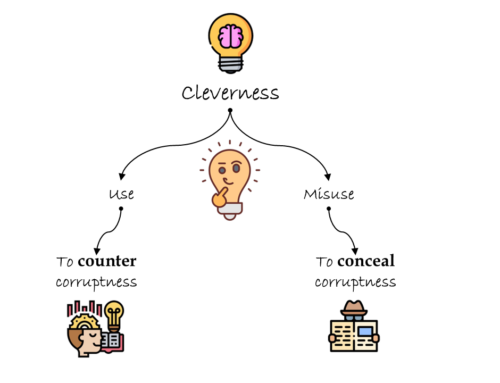The object of lust refers to the thing that triggers lust. The subject of lust refers to the person within whom lust is triggered.
Condemning the object means blaming the object that triggered lust for one’s improper actions. Sexual offenders sometimes justify their barbarism by arguing, “Those who dress like that are asking for it.”
The Gita declares the bastions of lust to be the senses, the mind and the intelligence – not the outer objects that trigger lust.
Gita wisdom has little patience for such self-serving rationalization. The Bhagavad-gita (03.36 – 03.43) offers an insightful analysis of lust – how it attacks and how it can be countered. While zeroing in on the location of lust, the Gita (03.40) declares its bastions to be the senses, the mind and the intelligence – not the outer objects that trigger lust. This underscores that the primary responsibility for controlling lust lies with the subject – people need to purify themselves, not blame others.
At the same time, it’s important to note that the object is also a subject. Those who are potentially victims of sexual offenses are also individuals with senses, mind and intelligence that can be hijacked by lust. And that lust often impels them to dress immodestly and seek sensual titillation by attracting others’ carnal attention. No doubt, the way they dress doesn’t justify any sexual offenses perpetrated against them – the responsibility for that lies with the perpetrator. But on their part, indulging in the impulse to dress skimpily frequently comprises an unhealthy caving in to lust.
To deal with lust effectively, the critical point to acknowledge is that all of us are its potential victims. We all need to take individual responsibility for doing whatever is necessary to protect ourselves. The best protection strategy is the comprehensive cure provided by bhakti-yoga that offers higher spiritual satisfaction and cleanses our heart, thereby freeing us from lust’s deceptive allure.



Leave A Comment